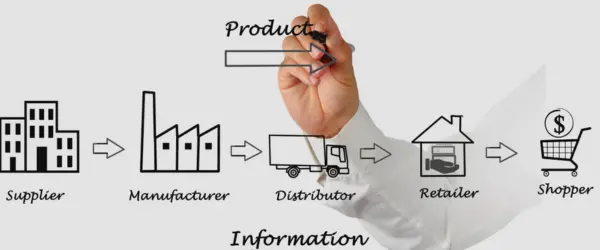The clothes we wear travel a remarkable distance before gracing our wardrobes. The global apparel supply chain is a complex dance, a web of interconnected processes spanning continents and involving a multitude of players. From humble beginnings to the finished product, understanding this intricate journey is essential for anyone interested in fashion, sustainability, or the inner workings of the garment industry.

From Field to Fabric: Sourcing Raw Materials
The story starts with the very foundation of our garments – raw materials. Cotton farmers cultivate vast fields, meticulously nurturing cotton plants until the bolls burst open, revealing the fluffy white fibers that will be ginned (separated from the seeds) and baled for transport. Sheep ranchers, often in remote pastures, raise flocks of sheep whose fleeces will be sheared and sent for processing.
These natural fibers then embark on a journey to spinning mills, where they are transformed into yarns – the threads that will be woven or knitted into fabrics. Synthetic fibers like polyester take a different route, derived from petroleum and undergoing complex chemical processes to create long strands that are then used to create various fabric types.
Design, Development, and Pattern Making: Bringing Ideas to Life
Fashion ignites on the designer’s table. Here, fueled by inspiration and current trends, designers translate their creative vision into sketches and technical specifications. These detailed blueprints outline everything from fabric choices and garment construction to trims and embellishments. Pattern makers take the designer’s vision a step further, meticulously crafting precise paper patterns that ensure the two-dimensional sketch translates into a three-dimensional garment that fits and functions flawlessly.
This intricate process involves creating multiple prototypes, a continual back-and-forth between designer and pattern maker until the perfect fit and silhouette are achieved.
Across the Globe: Garment Manufacturing – A Symphony of Skill
Once the design and pattern are finalized, the garments are ready for production. Many brands choose to manufacture overseas in countries like China, Bangladesh, or Vietnam, where lower labor costs can make large-scale production more economical.
Here, skilled workers take center stage in a symphony of specialized tasks. Cutting specialists meticulously lay out fabric plies according to the pattern, ensuring efficient use of materials. Sewing machine operators, each with their area of expertise, transform the cut pieces into different garment sections. Dyers use carefully controlled processes to imbue fabrics with vibrant colors or achieve a desired washed-out look.
Finishing specialists handle the final touches, pressing garments and ensuring a smooth, professional look. Throughout this process, quality control inspectors conduct checks at various stages to identify and rectify any discrepancies, ensuring the garments meet the brand’s specifications.
Logistics & Transportation: Getting Garments to Market – A Global Balancing Act
Finished garments need to reach eager consumers across the globe. This is where logistics companies step in, orchestrating the complex task of transporting vast quantities of apparel. Containers, giant metal boxes loaded onto cargo ships, are a common method for overseas transportation, offering a cost-effective way to move large volumes.
For speedier deliveries, particularly for time-sensitive fashion trends, air freight may be used, although this comes at a higher cost. Customs regulations, a set of rules governing the import and export of goods, play a crucial role. Meticulous documentation is required to ensure garments clear customs efficiently and avoid delays.
Distribution & Retail: The Final Stop – From Warehouse to Wardrobe
The journey nears its end as garments arrive at vast distribution centers. Here, they are meticulously sorted and organized based on style, size, and color. These centers act as hubs, efficiently shipping garments to their final destinations – retail stores or online retailers. Wholesalers may also play a role in the distribution network, purchasing garments in bulk from brands and then distributing them to smaller stores.
Finally, the garments reach the consumer, either through the familiar aisles of brick-and-mortar stores or the convenient click of a button on an online shopping platform.
Sustainability in the Supply Chain: A Growing Focus on Ethics and Environment
The global apparel supply chain faces a critical challenge – becoming more sustainable. Environmental concerns regarding water usage during cotton production and the chemical pollution associated with fabric dyeing are pushing for innovation in eco-friendly practices.
Ethical labor practices and ensuring fair wages for garment workers are also paramount considerations. In response to these concerns, many brands are exploring sustainable materials like organic cotton and recycled polyester. Additionally, collaborations with factories that prioritize ethical production practices and fair wages are becoming increasingly important.
Conclusion: The Future of Global Apparel Supply Chains
The global apparel supply chain is constantly evolving. Technological advancements like automation and 3D printing could reshape production processes. Consumer demand for transparency and sustainability will continue to drive change. By understanding the complexities of the supply chain, we can all play a role in making the fashion industry more ethical and environmentally responsible.

You must be logged in to post a comment.